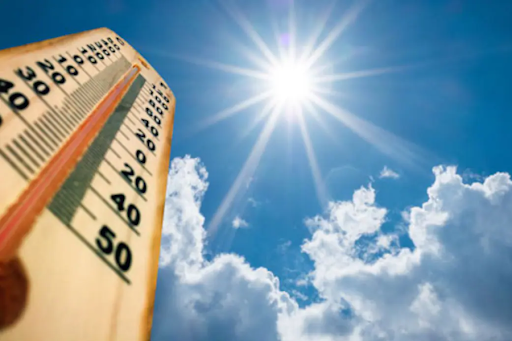What You Should Know About Converting 50 Degrees Celsius to Fahrenheit

Temperature conversions are more than just mathematical exercises; they’re practical skills that bridge different systems of measurement used across the globe. Whether you’re preparing for a trip abroad, following a recipe, or grappling with the realities of extreme weather, understanding how to convert Celsius to Fahrenheit can make a significant difference. In this article, we’ll dive into converting 50 degrees Celsius to Fahrenheit, explore why this conversion matters, and examine the real-world implications of such high temperatures, particularly in the context of scorching heatwaves. Through a series of questions and reflections, let’s uncover the deeper significance of temperature and its impact on our lives.
How to Convert 50 Degrees Celsius to Fahrenheit
Let’s begin with the core question: how do we convert 50 degrees Celsius to Fahrenheit? To answer this, we need a reliable method. The formula for converting Celsius to Fahrenheit is:
F=(95×C)+32 F = \left( \frac{9}{5} \times C \right) + 32 F=(59×C)+32
Why does this formula work? Consider the relationship between Celsius and Fahrenheit scales. Celsius is based on the freezing point of water (0°C) and its boiling point (100°C), while Fahrenheit uses 32°F for freezing and 212°F for boiling. The formula accounts for this difference in scale and offset. Now, let’s apply it to 50°C.
Calculation
Let’s break it down step by step:
- Multiply 50 by 9/5: 50×95=50×1.8=90 50 \times \frac{9}{5} = 50 \times 1.8 = 90 50×59=50×1.8=90
- Add 32 to the result: 90+32=122 90 + 32 = 122 90+32=122
So, 50 degrees Celsius equals 122 degrees Fahrenheit. But let’s reflect: does this number feel intuitive? What does 122°F represent in terms of weather or human experience? To put it in perspective, 122°F is an extraordinarily high temperature, far beyond typical summer heat in most places. This leads us to wonder: what conditions might produce such heat, and how does it affect us?
Why Understanding This Conversion Matters
Why is it important to know that 50°C equals 122°F? Let’s explore some scenarios where this knowledge is practical:
- Traveling: Imagine you’re planning a trip from Europe, where Celsius is standard, to the United States, where Fahrenheit dominates weather reports. If the forecast predicts 122°F, what would that feel like compared to your usual Celsius-based expectations? How might this affect your packing or activities?
- Cooking: Many recipes, especially from the U.S., specify oven temperatures in Fahrenheit. If a recipe calls for 122°F, it’s likely a low, slow-cooking process, but how would you set your Celsius-based oven to match? Understanding conversions ensures precision.
- Science and Education: In scientific experiments or classrooms, temperature conversions are often necessary to compare data across regions. Why might a researcher need to convert 50°C to Fahrenheit when analyzing global climate trends?
- Health and Safety: As we’ll explore later, 50°C is a dangerous temperature for the human body. Knowing its Fahrenheit equivalent helps communicate the severity of heat to those accustomed to that scale.
Reflect on your own experiences: have you ever needed to convert temperatures for practical reasons? How did it shape your decisions? These scenarios highlight that temperature conversions are not just academic—they’re tools for navigating a connected world.
Quick Reference for 50 Celsius to Fahrenheit
For frequent temperature converters, memorizing key benchmarks can be a time-saver. Let’s consider some common Celsius-to-Fahrenheit conversions:
- 0°C = 32°F (freezing point of water)
- 50°C = 122°F (our focus)
- 100°C = 212°F (boiling point of water)
Why might these benchmarks be useful? Imagine you’re glancing at a weather app or a recipe. Recognizing that 50°C is 122°F instantly tells you it’s extremely hot—potentially dangerous. But what if you don’t want to calculate every time? This brings us to another question: are there faster ways to handle conversions?
Using Online Tools and Apps
In today’s digital age, do we always need to rely on manual calculations? Consider the convenience of technology. If you search “50 C to F” on a search engine or use a smartphone app, the result—122°F—appears instantly. Many weather apps even display both scales side by side. But let’s reflect: what are the trade-offs of relying on tools versus understanding the process? Does using a calculator deepen your understanding of temperature scales, or does it simply save time? When might it be better to know the formula by heart?
For those who prefer tools, countless websites and apps offer conversion calculators. Some even allow you to input a range of temperatures for quick comparisons. Have you ever used such a tool? How did it influence your approach to temperature conversions?
The Effects of Burning Heat: How 50 Degrees Celsius Feels
Now that we know 50°C equals 122°F, let’s shift gears to a more pressing question: what does 50°C feel like, and why does it matter? To answer this, let’s draw inspiration from real-world scenarios, such as the severe heatwaves reported in places like Delhi, where temperatures have reached 50°C.
The Reality of Extreme Heat
Imagine stepping outside into 50°C heat. The air feels like a blast from an oven, and the ground radiates warmth through your shoes. In Delhi, such temperatures have pushed residents to their limits, with authorities warning of water shortages and health risks. Why is 50°C so challenging? To understand, we need to explore how the human body responds to extreme heat.
How Your Body Reacts to Extreme Heat
Our bodies are designed to maintain a core temperature around 37°C (98.6°F). When exposed to 50°C, what mechanisms does the body use to stay cool? There are two primary methods:
- Vasodilation: Blood vessels near the skin widen, allowing heat to escape. Why might this increase strain on the heart?
- Sweating: Sweat evaporates, cooling the skin. But what happens when humidity is high, or the body runs low on fluids?
These mechanisms work well up to a point, but 50°C pushes them to their limits. To grasp the hazards, let’s look at the stages of heat-related disorders.
Heat Cramps: The Warning Sign
What are the first signs that the body is struggling with heat? Heat cramps—painful muscle spasms, often in the legs or abdomen—occur when the body loses fluids and electrolytes through sweating. Why do you think these cramps target muscles specifically? How might this affect someone working outdoors in 50°C heat, like many Delhi residents who rely on daily labor?
Heat Exhaustion: When the Body Struggles
If heat exposure continues, what happens next? Heat exhaustion sets in, with symptoms like heavy sweating, dizziness, nausea, and a rapid pulse. The body is diverting blood to the skin to cool down, but this increases dehydration and heart rate. Reflect on this: how might these symptoms impair someone’s ability to function in extreme heat? What precautions could prevent this stage?
Heatstroke: The Most Serious Threat
What is the worst-case scenario in 50°C heat? Heatstroke occurs when the body’s core temperature exceeds 40°C (104°F), and cooling mechanisms fail. Symptoms include confusion, seizures, and hot, dry skin (as sweating stops). In severe cases, organ failure—starting with the kidneys—can lead to coma or death. Why is heatstroke so deadly? Consider the cascade of effects: when the body can’t cool itself, what happens to critical systems like the brain or heart?
Staying Safe During a Heatwave
Given these risks, how can people protect themselves in 50°C heat? Let’s brainstorm some strategies:
- Hydration: Drinking water or electrolyte-rich beverages prevents dehydration. Why are electrolytes important?
- Clothing: Loose, light-colored clothing reflects heat. How does this compare to tight, dark clothing?
- Timing: Avoiding strenuous activity during peak heat hours (midday) reduces risk. When might be safer times for outdoor work?
- Cooling: Access to air-conditioned spaces or shade is critical. But what if these aren’t available, as is the case for many in extreme heatwaves?
Reflect on your own environment: have you ever experienced extreme heat? What strategies worked for you, and how might they apply to someone facing 50°C?
Summary
Converting 50 degrees Celsius to Fahrenheit yields 122°F—a simple calculation with profound implications. Whether you’re navigating international travel, cooking, or studying, mastering this conversion enhances your ability to adapt to different measurement systems. But beyond the numbers, 50°C represents a dangerous threshold for human health, as seen in heatwaves like those in Delhi. By understanding both the mathematical and physiological aspects of this temperature, we gain a deeper appreciation for its impact.
Why does this matter to you? Perhaps it’s about being prepared for a changing climate, where extreme heat is becoming more common. Or maybe it’s about equipping yourself with practical skills for everyday challenges. Whatever your reason, the ability to convert temperatures and recognize their real-world effects empowers you to make informed decisions.
For those eager to sharpen their mathematical skills, consider exploring Advanced Math or Vedic Math+Mental Math courses. Engaging with hands-on lessons or math quizzes for grades 3rd through 6th can make learning both fun and practical. How might such skills enhance your ability to tackle problems like temperature conversions or even broader challenges in life?
By asking questions and reflecting on the significance of 50°C, we’ve uncovered not just a number, but a gateway to understanding our world more deeply. What other questions does this temperature spark for you?
Stay in touch for more updates and alerts visit: Usa VyVyManga





